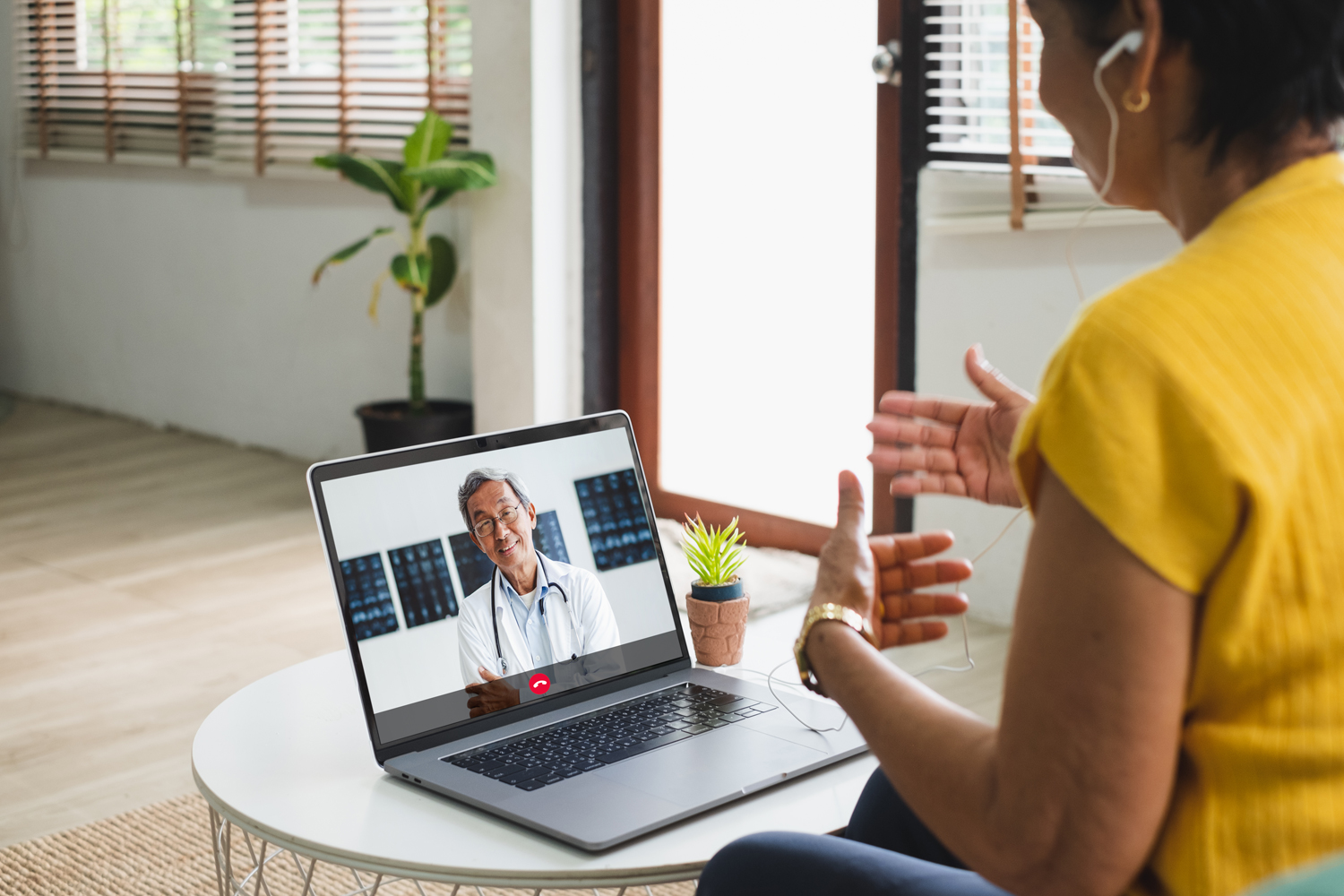NEW CANCER TREATMENTS only get to patients once they are shown to be safe and effective in clinical trials, which require participation by people diagnosed with cancer. But there’s a numbers problem: Less than 8% of people with cancer enroll in clinical trials, and 20% of cancer clinical trials are never completed because they fail to enroll enough patients.
“We know how important cancer clinical trials are to advancing new standards of care,” says Devon Adams, a health policy analyst and patient advocate at the American Cancer Society in Washington, D.C., “and we know there are barriers that prevent certain populations from joining.” For example, Black and Hispanic patients, as well as those from rural areas or with lower socioeconomic status, are underrepresented in clinical trials.
Remote visits and other tools of telemedicine may help boost clinical trial participation and diversity and, in turn, expand treatment options for patients. Adams recently led an analysis of an American Cancer Society survey conducted in summer 2021, which was published in JAMA Network Open in July 2022. Of more than 1,100 cancer patients and survivors surveyed, the vast majority—between 60% and 85%—said they would be more likely to enroll in a clinical trial if it used at least one of nine methods that reduce the need for participants to physically travel to the trial location.
Oncologist Jorge Cortes, director of the Georgia Cancer Center in Augusta, who was not involved in the survey, thinks telemedicine may help remedy longstanding issues. “Clinical trials have only included patients who can come to the centers,” he says. That means people who can’t afford to take time off work or travel long distances don’t participate—even though they’re part of the population who would need the treatment. Telemedicine, he says, has the potential to flip the script. “We need to bring the trials to the patients, not the patients to the trial.”
In a paper published February 2022 in ESMO Open, a group of oncologists and researchers, including Cortes, outlined ways telemedicine could improve oncology clinical trials, incorporating lessons learned from COVID-19. When the pandemic ramped up, patients swapped in-person checkups for virtual visits, using technology to continue care. “If we can adapt in such a big crisis, I think we can adapt under more planned circumstances,” Cortes says.
“COVID really provided an opportunity for telehealth to take off,” says Adams. “And cancer patients were overwhelmingly satisfied with the care they received. I think that would naturally translate to clinical trials.”
Many aspects of cancer clinical trials could be decentralized, or completed using alternative methods so a patient doesn’t need to visit a cancer center, says Adams. Patients could meet with oncologists virtually. The experimental drug could be shipped to a patient or provided by a local pharmacy. Wearable electronic devices could collect vital signs and other data. Patients might undergo imaging at local facilities without having to visit the cancer center overseeing the trial.
Not every trial could be conducted remotely, says Cortes. Those that test the first use of a drug in people, for example, would still require close supervision.
Adams cautions that decentralized trials will only increase diversity and enrollment if patients have access to the needed technology. “We have to make sure people have the tools necessary,” he says. That means ensuring participants know how to use devices and have a reliable internet connection.
Decentralized trials may be a new concept for many patients, but Adams encourages those interested in clinical trials to ask their providers about remote options. “We’re really starting to see the true value of remote care and the potential for increasing patient access,” he says. “It really is proving itself as a viable option for patients.”
Cancer Today magazine is free to cancer patients, survivors and caregivers who live in the U.S. Subscribe here to receive four issues per year.





